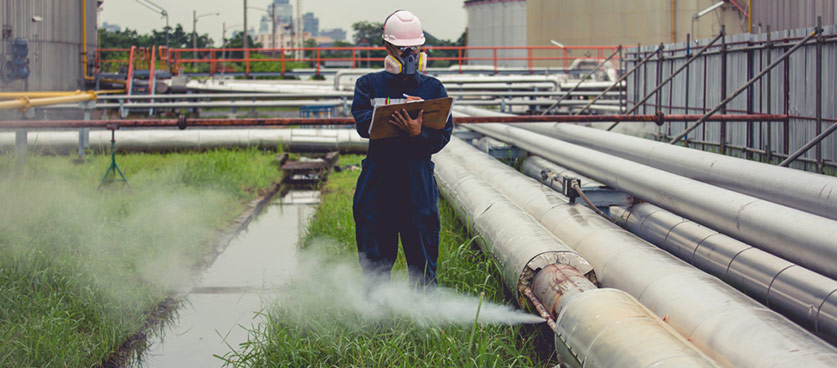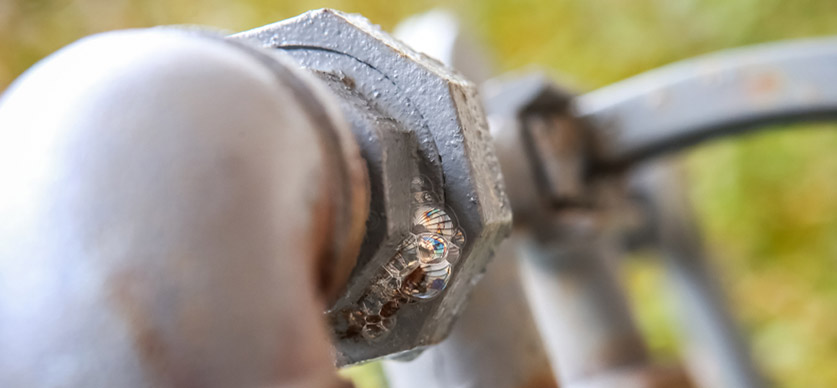Nitrogen Leak Test – How to Pressure Test with Nitrogen Gas | GENERON
November 30, 2020
Due to its inert characteristics, many industrial processes use nitrogen gas at several stages of their inspection and manufacturing. Gaseous nitrogen can be safely used to assess plumb work, check the integrity of pipeline networks, and test vessels for leaks.
Learn how nitrogen gas leak testing works in an industrial setting.
What Is Leak Testing?
Leak testing is a method of analyzing industrial storage and transport equipment (vessels, tubing, and pipelines) for defects. Leak testing is done to ensure that newly installed systems can withstand the temperatures and pressures associated with normal operations. This type of testing forms an integral part of safety protocols in different industrial settings.
For example, nitrogen gas testing done before pipeline commissioning allows oil and gas operators to safely prepare their systems for first use.

Nitrogen Pressure Testing – Why Nitrogen?
Although a lot of industrial components require pressure testing before installation, not all testing methods are ideal for all components. For example, hydrostatic testing uses water to conduct fluid pressure testing which is not feasible in moisture-sensitive systems. Corrosive damage to test components from water channeled through them will significantly diminish their useful life spans. While pneumatic testing provides an alternative to hydrostatic testing, this too can expose test materials to harmful moisture.
Using a nitrogen pressure test procedure allows operators to circumvent the challenges associated with other forms of testing. Nitrogen gas possesses unique physical and chemical properties that make it effectively inert. This makes it perfect for leak testing.
As a result of its low reactivity, gaseous nitrogen will displace oxygen and moisture from the internal environment of the test components while simultaneously assessing for any potential leaks.
How to Pressure Test with Nitrogen Gas
A nitrogen leak test procedure is quite straightforward and is done in an orderly sequence to guarantee maximal safety during all aspects of testing. While the specific steps will vary depending on the nature of the component being tested, some general guidelines are universally applicable.
Before the commencement of a nitrogen gas leak detector test, the test component must be isolated from the rest of the system. This can be achieved by closing connecting pressure valves and other connection ports that link the test vessel/pipeline with other system equipment.
Once the test area has been isolated, gaseous nitrogen supplied from a nitrogen cylinder or synthesized by an on-site generator is directed into the component via an inlet valve left open. Contaminants within the test vessel will be purged under low pressure. This type of nitrogen purging is typically no higher than 25% of the component’s pressure rating during routine operation. This phase of pressure testing with nitrogen gas is sustained for a reasonable duration to ensure the test component can handle it without leaking.
Following successful low-pressure testing, the applied pressure is gradually but continuously increased to see how well the test component can maintain its integrity. Although testing will continue till the standard pressure rating of the test vessel is achieved, the upper limit for the test will be determined by varying industrial regulations concerning leak testing.

Visual inspection for nitrogen leaks is done by applying a soapy solution to the surface of the component being tested. Leaks present in the material will cause gas bubbles to form at defective spots therefore guiding post-test repairs. Keep in mind, other nitrogen leak detection methods are available.
Using Pressurized Containers vs. Onsite Nitrogen Generators
Nitrogen gas required for leak testing can be sourced either from pressurized gas cylinders or an on-site nitrogen generator. Although using nitrogen gas cylinders appears to be the cheaper option, it is significantly more costly in the long term when compared to the one-time payment for a nitrogen generator.
Once installed, a PSA or membrane nitrogen generator will only require few scheduled maintenance checks yearly whereas the purchase of gas cylinders will remain a constant part of the operational budget.
Other benefits of using an onsite nitrogen generator for leak testing include:
- On-demand gas synthesis in sufficient quantities at any point in time
- Preservation of crucial industrial floor space (especially when using mobile nitrogen generators) which poses a serious challenge with the use of nitrogen gas cylinders
- Efficient gas usage with minimal waste
- Greater nitrogen safety for personnel as the risk associated with storing large quantities of nitrogen is eliminated
Nitrogen Gas Leak Detection Methods
There are multiple ways to detect a nitrogen gas leak in an industrial setting however, the accuracy varies between methods. The two most common test methods are outlined below:
- Commercial nitrogen detectors used to inspect suspected leak points in newly constructed equipment/components
- Oxygen sensors which possess subtractive technology that correlates a reduction in oxygen levels from a test component with the presence of a nitrogen leak
GENERON Has Onsite Nitrogen Generators You Need for Efficient Leak Detection
At GENERON, we offer cutting-edge nitrogen generation solutions to all our clients. Our services are designed to help our partners maximize industrial productivity while remaining cost-effective. Our nitrogen generators will provide the high-purity gas required to conduct your leak detection tests.
Contact us today for more information about the nitrogen generation services and equipment we offer.

